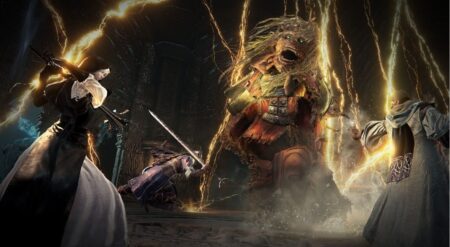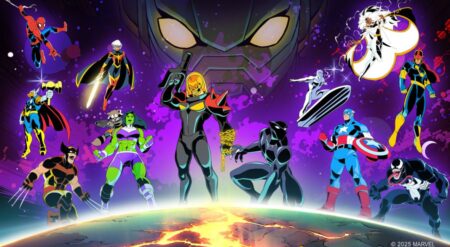Video games have regularly discussed what it means to be human. From covering questions like “what makes us as a species unique?” to “what exactly is free will?”, every aspect of what makes humans who we are is explored through this unique form of entertainment. Developer Storm in a Teacup and publisher ES Digital Games tackle this ultimate question and explore a modern twist with the newest game, Steel Seed, a stealth action-adventure game. This time, it discusses humanity through the lens of AI in a world where humanity is on the brink of extinction.
You play as Zoe, an android who awakens one day with little memory of what’s happening. She enters a world full of machines after a catastrophe that almost led to the extinction of the human race. Humanity was preserved in this massive machine, where they can return once the world is stabilized. But one day, the AI running the machine malfunctions. It’s up to Zoe and her trusty companion, Koby, to find out how her father fits into all these plans, why the AI is malfunctioning, and how to save humanity.
The worst thing a story that tries to deliver a meaningful message can be is predictable. Zoe’s journey in Steel Seed is just that. From the identity of a mysterious stranger who offers Zoe help, to the hunters who are always after her. Even the big twists at the end could be seen a mile away, leading to disappointment, especially when every message or meaning is spelled out too much. Nothing is left to ambiguity, or for the player to figure out. Once something significant happens, it gets explained a little too in-depth.
Moreover, time and again, the voice acting doesn’t seem to match what’s going on in the game. After an intense section, Zoe sounds happy or curious. Not like she’s recovering from a traumatic or an intense situation. Outside of cutscenes, Koby can be taken out during combat. Every time, Zoe acts like either Koby is down for good, or she didn’t instruct him to take out enemies, and he got caught.
The voice acting doesn’t help Steel Seed’s lackluster story.
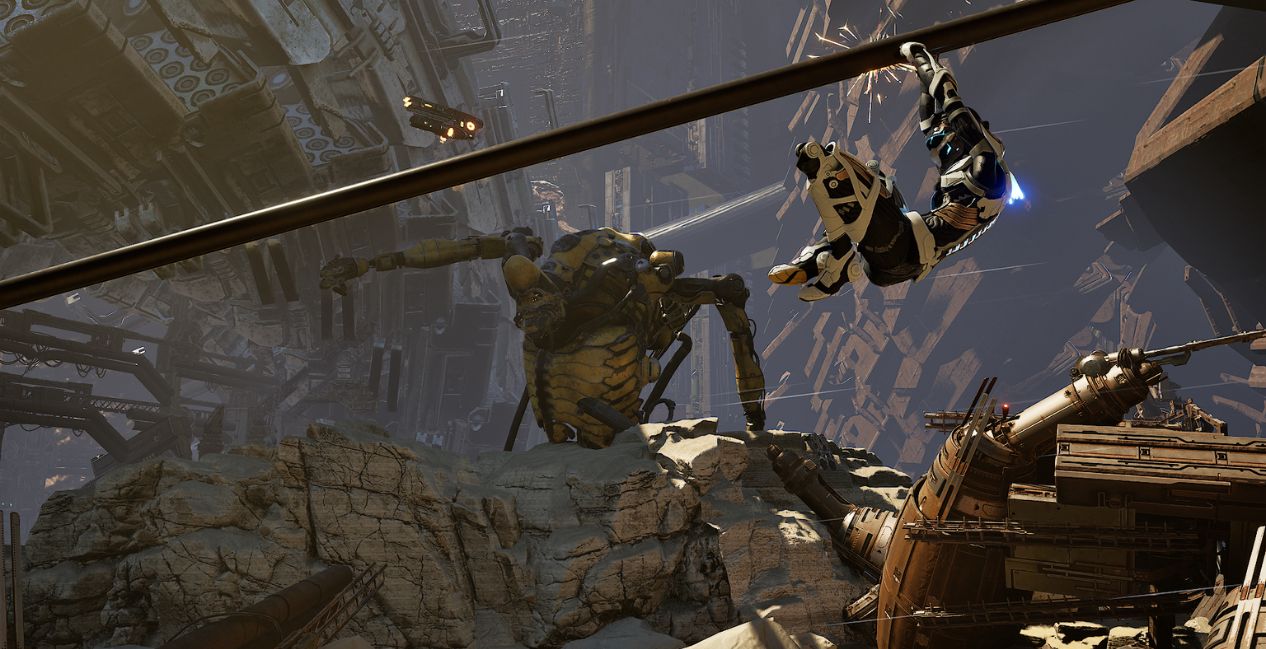
Moments later, Koby recovers, and Zoe acts like nothing happened. For how experimental combat sections can be, you’ll hear Zoe cry out for Koby being hurt. The voice acting in Steel Seed is hindered by not taking the time to ensure that the lines match the mood. If the voice actors can’t relate to the characters they voice, how can we, the players, connect with them?
The world and explorable areas, though, wonderfully support the story in Steel Seed. There are four “levels” that each cover a primary need of the facility. Like a power section to supply power to the entire facility. There is so much detail wherever you look. Moreover, exploration is more vital than initially explained.
Secrets are hidden around every corner that hold materials for upgrades, lore bits if you want to learn more about what came before, the enemies you face, and items needed to unlock fantastic upgrades. Even better, each environment is vastly different from the last. Unlocking a new area is pretty exciting because each one is like a breath of fresh air after the previous starts to feel like it’s overstaying its welcome.
You learn that the areas are vital to the facility’s function in Steel Seed. But why are the enemies going so far out of their way to stop Zoe? They go so far that the environments get destroyed to an unrecognizable level. Some could even lose all function due to how damaged they get. The destruction they cause is almost comical because of how relentlessly the hunter and a giant colossus robot pursue Zoe. It comes full circle to the point where, once their primary purpose is revealed, that purpose makes no sense compared to what you’ve witnessed them do to stop your journey.
Some features in Steel Seed are not fully refined.
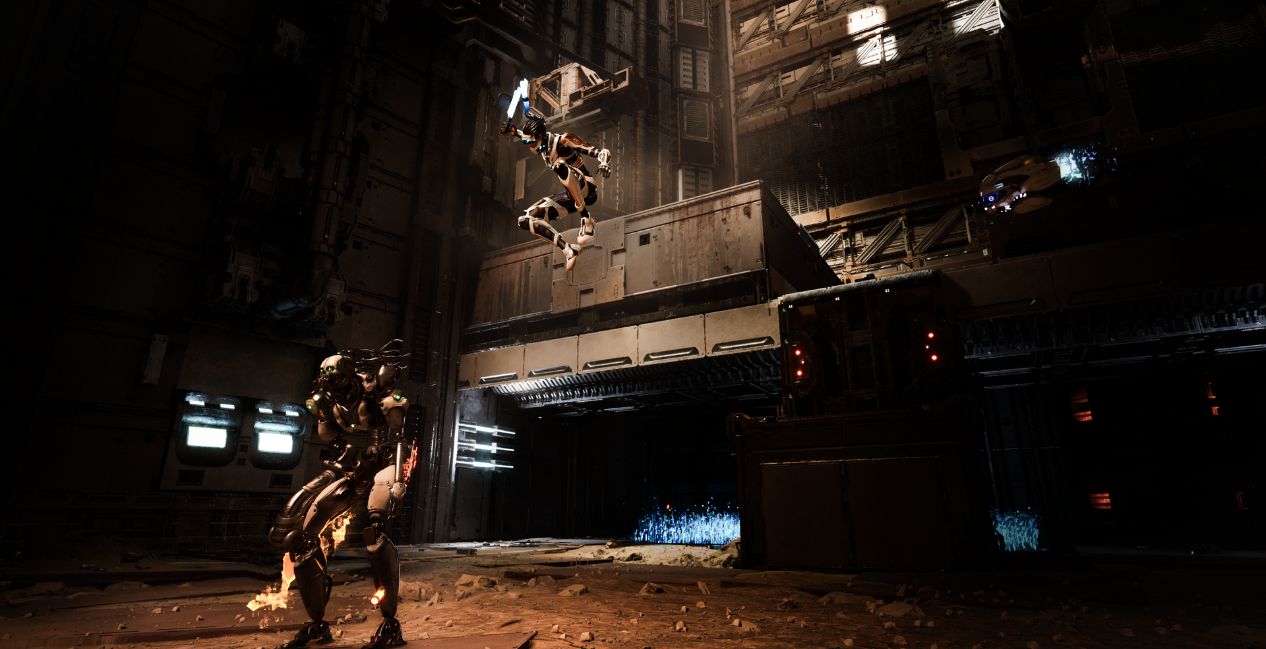
To avoid capture and defeat in Steel Seed, you’ll have to fight, stealth, and platform through these facilities. Generally, these features feel unfinished. Enemies can detect you way too easily, and trying for a stealth kill regularly leads to a half-dead enemy trying to fight you instead. The enemy AI can be polarizing, from never noticing a thing and being tricked repeatedly by their allies disappearing in a data mist, or having eagle eyes and seeing everything happening around them.
Koby can help by being your scout. Think of the bird allies in Assassin’s Creed, where you completely control where they go. Koby can tag enemies and use limited attacks to stun, snipe, and distract robots. However, as mentioned earlier, Koby gets detected and beaten even more quickly. Having Koby get caught would be a significant detriment, but it’s just a roadblock. Koby returns surprisingly quickly, even if Zoe’s cries make it seem the contrary. Koby getting caught has zero risk since it doesn’t reveal Zoe’s whereabouts. So Koby can come back a short time later, and you can repeat whatever you previously did without any punishment.
There should have been more risk in using Koby to help in Steel Seed, as if Koby were tied to a checkpoint. If Koby dies, he should be unavailable until you reach the next checkpoint. Or you have to resurrect him to restore his features. The risk of using Koby never outweighs its benefits, especially considering its wide range of uses. Zoe can hide safely outside a fighting arena, scope out everything, take out many enemies, and clean up the rest, no problem.
If forced to fight enemies face-to-face, you’re not completely doomed. Zoe is adept at using a sword to take out her foes with support from Koby. With her digital abilities, she can avoid attacks at the last possible second and land devastating blows. This is how combat is presented in Steel Seed. But just like stealth, combat is also unrefined to the point of being aggravatingly rough.
The enemy design in Steel Seed lacks variety.
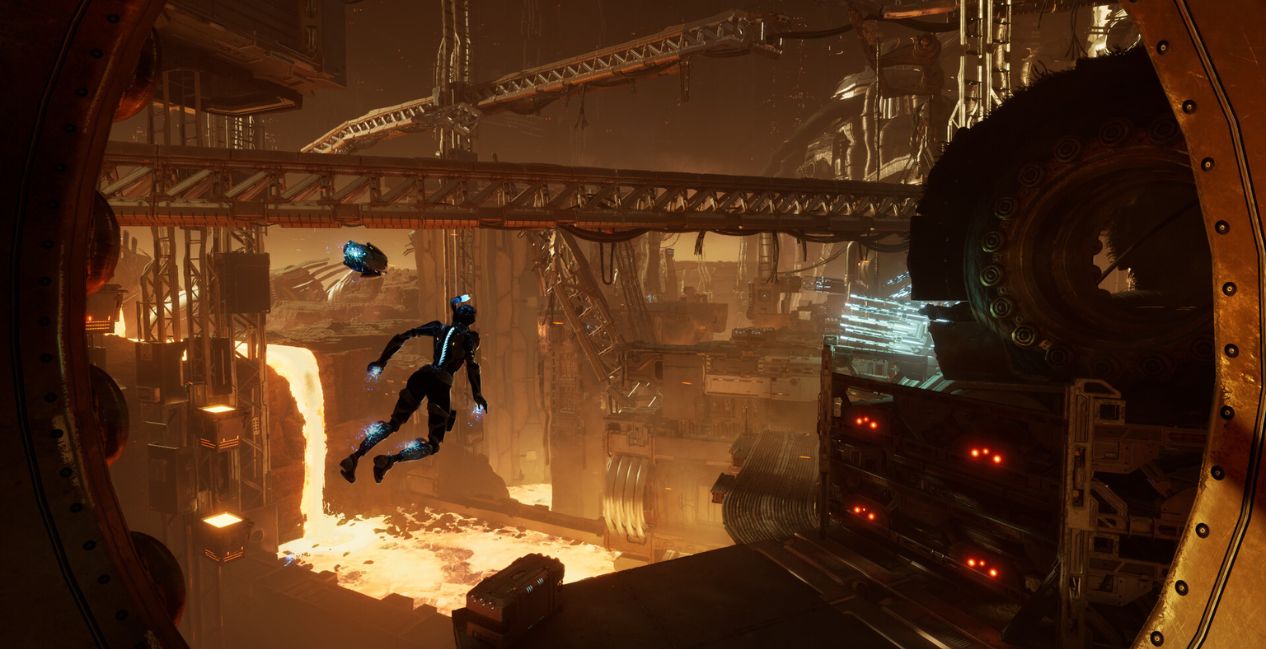
You’ll quickly encounter just about every enemy you’ll face on Zoe’s journey in Steel Seed pretty early on. And once you see them, there isn’t much variety beyond that. You have about five to six enemy types, and the difficulty comes from the amount and variety you’ll face at a time if forced to fight them head-on or sneak around them. Beyond that, dodging doesn’t always work how you want it to, even though you use it the same way in the same window.
Beating on them doesn’t even have enemies recoil as you’d expect. They bounce back a little too quickly or do not even react at all to being wailed on. Thankfully, Koby acts as a way to build up stagger, or later on, can hack enemies to help. And using Koby is a great way to unlock upgrades quickly. Upgrades are made available for purchase by completing specific challenges, such as eliminating five enemies without being caught or hitting weak points within a set time.
Upgrade systems like this are great, and I wish more games had something like this. It encourages you to step out of your comfort zone with what you like to use, be more aggressive, and optimize your stealth routes to meet specific requirements. I had the most fun with Steel Seed when I was trying to unlock upgrades that sounded fun or knew would help in the long run. Even then, currency to unlock upgrades doesn’t reset upon death. So there’s even more encouragement to trial and error your way to unlocking what you want.
The best part of Steel Seed was by far the exploration, which reflects the well-designed environments. The main objective paths are very linear, but looking around will reveal hidden areas or secrets to discover. Many secrets and collectibles aren’t even defined until you find out that specific type of item.
When discovering collectibles leads to better upgrades, exploration becomes even more exciting and encouraged.
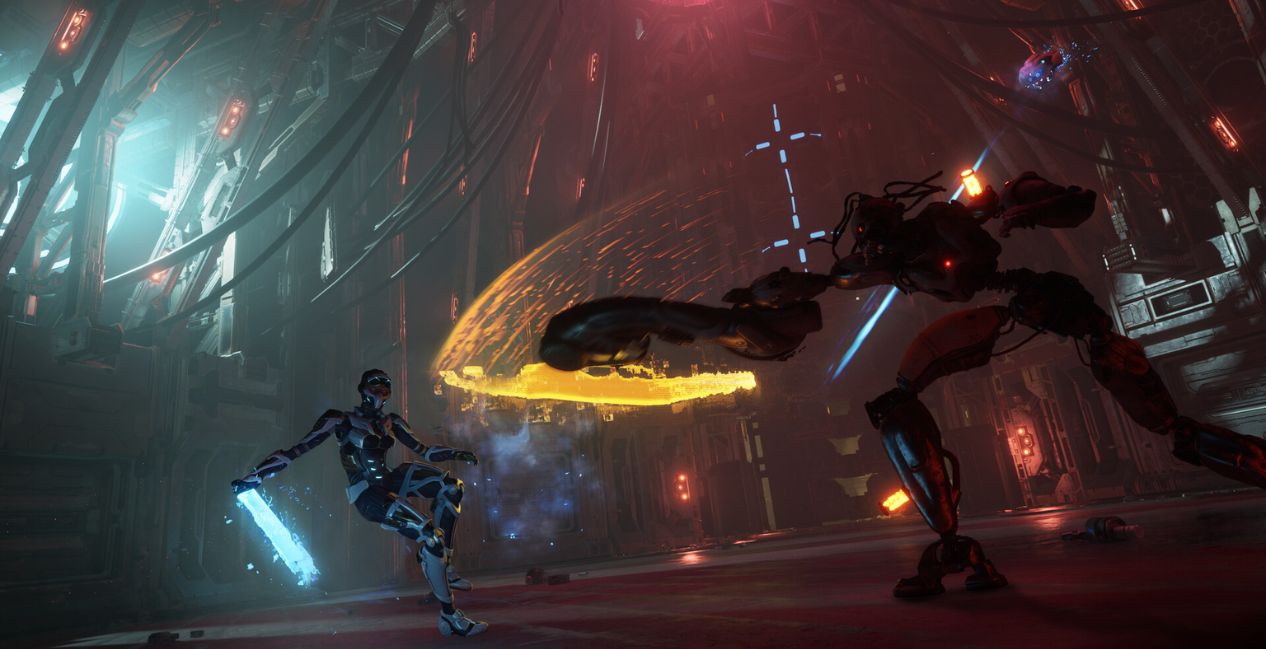
Every checkpoint tells you how many items are to collect in that section of the level. You may not find out what one of those symbols is until much later in the game. Once you do, you know what to look for if you want to return to past levels with new abilities and unlocks.
Platforming may not feel great, but it is the most polished part of Steel Seed. This is especially highlighted during the numerous chase or stealth sequences at the end of each level. Bosses aren’t much of a thing, and completing a primary story beat is endcapped by a cinematic destruction as the hunters try to stop Zoe.
You may learn when to pick up when these sections begin, but when they do, they are almost exciting to play through. These require quick reflexes that push your skill with using Zoe more than any of the arenas did up until these points. Maybe Steel Seed would’ve ended better if the final portion was one of these moments instead of what is in the final product, because that is the least satisfying portion of an okay experience.
Steel Seed defines humanity, even if it spells it out. There’s little nuance, and the twists about its story aren’t at all surprising. Plus, with voice acting that doesn’t match the tone, and unrefined gameplay, you get a game full of mismatched gears trying to work together. But the environments and the world built by Storm in a Teacup are beautiful.
The environments are vast, and curiosity often wins, even in mostly linear levels. As for the other two tentpoles that define this game, stealth and action don’t feel great. Despite how much the game tries to make its message blatantly obvious, Steel Seed struggles to define what ultimately makes the game fun and unique.
Steel Seed is available April 22nd on PC, Xbox Series X|S, PlayStation 5, and Nintendo Switch.
Steel Seed
-
Rating - 6/106/10
TL;DR
Steel Seed defines humanity, even if it spells it out. There’s little nuance, and the twists about its story aren’t at all surprising.




